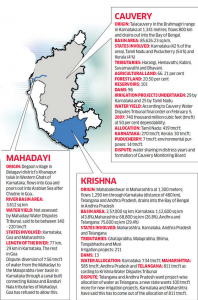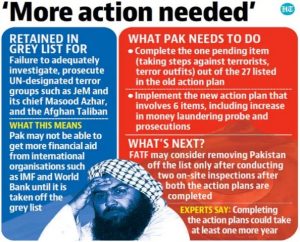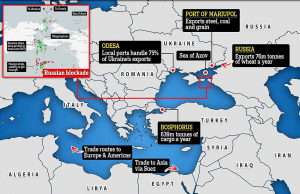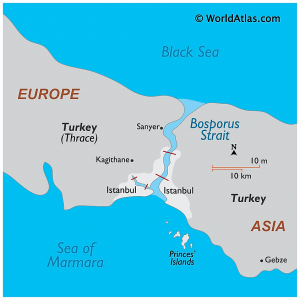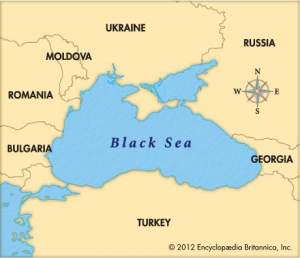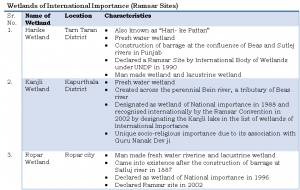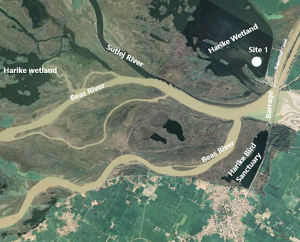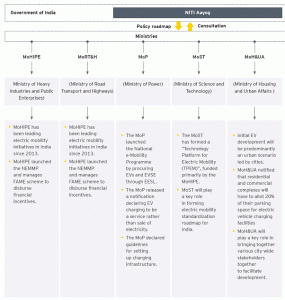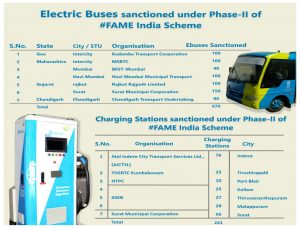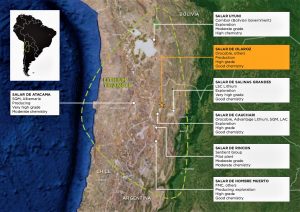DAILY CURRENT AFFAIRS (MARCH 08, 2022)
THE ENVIRONMENT, ECOLOGY AND CLIMATE CHANGE
1.DIALOGUE TOWARDS CLEAN AIR
THE CONTEXT: A two-day ‘Dialogue towards Clean Air’organised by the Commission for Air Quality Management (CAQM) and the Ministry of Environment, Forest and Climate Change. The discussions that are geared towards deliberating measures to deal with the NCR’s air pollution problem.
THE EXPLANATION:
- According to the experts, there is a need to bring approaches related to health into plans and policies concerning air pollution, improving capacity and dealing with staff shortage at the local level, and scaling up the Ujjwala scheme.
- The National Clean Air Programme (NCAP), which was launched in 2019 with the aim of achieving a 20%-30% reduction in PM 10 levels by 2024. The 132 cities that are included under the NCAP were to prepare their own city-specific action plans.
Value Addition:
Commission for Air Quality Management (CAQM)
- Formed by an ordinance, “Commission for Air Quality Management (CAQM) in National Capital Region and Adjoining Areas Ordinance 2020”, in October 2020.
- The Commission for Air Quality Management (CAQM) is a statutory body formed under the Commission for Air Quality Management in National Capital Region and Adjoining Areas, Act 2021.
- The CAQM has replaced the Environment Pollution (Prevention and Control) Authority (EPCA) which was appointed by the SC and had been active for 22 years.
- It will supersede bodies such as the central and state pollution control boards of Delhi, Punjab, Haryana, UP and Rajasthan.
- Composition:
- The new 18-member Commission brings together the Centre, states, and other stakeholders on one collaborative platform.
- Chaired by a government official of the rank of Secretary or Chief Secretary. The chairperson will hold the post for three years or until s/he attains the age of 70 years.
- It will also have five ex officio members who are either Chief Secretaries, or Secretaries in charge of the department dealing with environment protection in the States of Delhi, Punjab, Haryana, Rajasthan, and Uttar Pradesh.
- Three full time technical members.
- Powers & Jurisdiction:
- It will have the powers to issue directions to these state governments on issues pertaining to air pollution.
- Exclusive jurisdiction over the NCR, including areas in Haryana, Punjab, Uttar Pradesh and Rajasthan, in matters of air pollution, and will be working along with CPCB and ISRO, apart from the respective state governments.
- The Commission will have the power to impose a fine of up to Rs 1 crore and imprisonment of up to 5 years in case its directions are contravened.
Pradhan Mantri Ujjwala Yojana
- The scheme of the Ministry of Petroleum & Natural Gas for providing LPG connections to women from Below Poverty Line (BPL) households.
- The target under the scheme was to release 8 Crore LPG Connections to the deprived households by March 2020.
- Under the Union Budget for FY 21-22, provision for release of additional 1 Crore LPG connections under the PMUY scheme has been made. In this phase, special facility has been given to migrant families.
Significance:
- In India, the poor have limited access to cooking gas (LPG). The spread of LPG cylinders has been predominantly in the urban and semi-urban areas with the coverage mostly in middle class and affluent households. But there are serious health hazards associated with cooking based on fossil fuels.
- According to WHO estimates, about 5 lakh deaths in India alone due to unclean cooking fuels. Most of these premature deaths were due to non-communicable diseases such as heart disease, stroke, chronic obstructive pulmonary disease and lung cancer.
- Indoor air pollution is also responsible for a significant number of acute respiratory illnesses in young children. According to experts, having an open fire in the kitchen is like burning 400 cigarettes an hour.
- Providing LPG connections to BPL households will ensure universal coverage of cooking gas in the country. This measure will empower women and protect their health. It will reduce drudgery and the time spent on cooking. It will also provide employment for rural youth in the supply chain of cooking gas.

THE GOVERNMENT SCHEMES INITIATIVES IN NEWS
2. CONTINUATION OF THE SWATANTRATA SAINIK SAMMAN YOJANA (SSSY)
THE CONTEXT: The Union Government approved the continuation of the SwatantrataSainik Samman Yojana (SSSY) and its components beyond 31.03.2021 for the Financial Years 2021-22 to 2025-26, with a total financial outlay of Rs.3,274.87 crore.
THE EXPLANATION:
According to the Ministry of Home Affairs, the decision shows the commitment of the Government to remember sacrifices of Freedom Fighters and taking inspiration from them during the year of Azadi Ka Amrit Mahotsav.
About the Scheme:
Swatantrata Sainik Samman Pension Scheme:
- A central scheme was introduced in 1972 during the silver jubilee year of independence which grants pension to freedom fighters and their eligible dependents if the freedom fighter had already expired. Later in 1980, it was liberalized and renamed as SwatantrataSainik Samman Pension Scheme, and made effective from August the same year.
- In 2017, when the 12th Five Year Plan ended, the NDA government approved the continuation of the scheme after renaming it as SwatantrataSainik Samman Yojana (SSSY) up to 2020. The monthly pension is considered a token of respect for the contribution of freedom fighters in the national freedom struggle. Various State wise pension schemes also exist for freedom fighter pensions.
3. “SAMARTH” INITIATIVE
THE CONTEXT: On the occasion of International Women’s Day 2022, Union Minister for MSME launched a Special Entrepreneurship Promotion Drive for Women -“SAMARTH” initiative o provide them an opportunity to be self-reliant and independent by undertaking self-employment opportunities.
ABOUT THE INITIATIVE:
Under the Samarth initiative of the Ministry, following benefits will be available to aspiring and existing women entrepreneurs:
- 20% Seats in free Skill Development Programs organized under skill development schemes of the Ministry will be allocated for Women. More than 7500 women will be benefitted.
- 20% of MSME Business Delegations sent to domestic & international exhibitions under the schemes for Marketing Assistance implemented by Ministry will be dedicated to women owned MSMEs.
- 20% Discount on annual processing fee on NSIC’s Commercial Schemes
- Special Drive for registration of women-owned MSMEs under Udyam Registration
Through this initiative, Ministry of MSME is focusing on providing Skill Development and Market Development Assistance to women and more than 7500 women candidates from rural and sub- urban areas will be trained in the FY 2022-23. Besides, thousands of women will be getting marketing opportunities to showcase their products in domestic and international exhibitions.
Also, to enhance the participation of women entrepreneurs in Public Procurement, a special discount of 20% shall also be offered on annual processing fee on NSIC’s following commercial schemes during the year 2022-23:
Single Point Registration Scheme
- Raw Material Assistance and Bill Discounting
- Tender Marketing
- B2B Portal msmemart.com
4. CAMPAIGN TO BRING BACK AT LEAST FOUR LAKH GIRLS WHO DROPPED OUT OF SCHOOL
THE CONTEXT: The Centre is launching a back-to-school campaign to bring at least four lakh young girls who are out of school into the formal education system.
THE EXPLANATION:
- The campaign to enrol them into schools will be driven by anganwadi workers in collaboration with district education officers, supported by tracking systems used by the WCD and Education Ministries.
- Under the new Saksham Anganwadi scheme of the Women and Child Development Ministry, these 11-14-year-old girls will no longer receive anganwadi support, as the focus shifts to 14-18-year-olds.
- According to UNICEF survey of 50,000 Indian adolescents during the COVID pandemic, also released at the same event, reported that while 90% of respondents were currently enrolled in school, a third of them knew of at least one girl who had dropped out.
- The dropouts were either engaged in domestic work or had gotten married. Also it added that at least a third of these girls wished to return to school, with respondents suggesting strategies to convince parents, to ensure girls’ safety in school and on the commute, and to provide better awareness of Government programmes.
- Also, in 2018-19, there were 11.88 lakh girls aged 11-14 years who were part of the Scheme for Adolescent Girls (SAG) in anganwadis, but this had dropped to 5.03 lakh by 2021.
What are Saksham Anganwadis?
- Saksham Anganwadis is a new generation of anganwadis that aims to upgrade anganwadis with better infrastructure and audio-visual aids.
- They are also powered by clean energy and thus provide a conducive environment for early child development. The outlay for Saksham Anganwadi &Poshan 2.0 in 2022-23 Budget Estimate is Rs. 20,263 crores. The scheme will hail a transformative change in the welfare, safety, and security of women and children of the nation.
5. LABOUR MINISTRY LAUNCHES ‘DONATE A PENSION’ SCHEME
THE CONTEXT: The Union Labour and Employment Ministry launched the “donate a pension” scheme allowing any citizen to pay the premium amount on behalf of an unorganised worker under the Pradhan Mantri Shram Yogi Maan-Dhan Scheme.
THE EXPLANATION:
Immediate support staff:
- The scheme allows a citizen to “donate the premium contribution of their immediate support staff such as domestic workers, drivers, helpers, care givers, nurses in their household or establishment”.
- The donor can pay the contribution for a minimum of one year, with the amount ranging from ₹660 to ₹2,400 a year depending on the age of the beneficiary, by paying through maandhan.in or visiting a Common Service Centre.
Value Addition:
PRADHAN MANTRI SHRAM YOGI MAAN-DHAN YOJANA
It is a central government scheme meant for old age protection and social security of Unorganised Workers (UW).
Features
- It is a voluntary and contributory pension scheme, under which the subscriber would receive a minimum assured pension of Rs 3000/- permonth after attaining the age of 60 years and if the subscriber dies, the spouse of the beneficiary shall be entitled to receive 50% of the pension as family pension. Family pension is applicable only to spouse.
- Contribution by the UW Subscriber : Through ‘auto-debit’ facility from his/ her savings bank account/ Jan- Dhan account from the date of joining PM-SYM till the age of 60 years as per the chart below. The Central Government will also give equal matching contribution in his pension account.
Eligibility criteria:
- Should be an unorganised worker (UW)
- Entry age between 18 and 40 years
- Monthly Income Rs 15000 or below
THE PRELIMS PERSPECTIVE
6. EXERCISE SLINEX-2022
THE CONTEXT: The Ninth Edition of India – Sri Lanka Bilateral Maritime Exercise SLINEX (Sri Lanka–India Naval Exercise) is scheduled at Visakhapatnam from 07 Mar to 10 Mar 2022.
THE EXPLANATION:
- SLINEX aims to enhance inter-operability, improve mutual understanding and exchange best practices and procedures for multi-faceted maritime operations between both navies. The Harbour Phase would include professional, cultural, sporting and social exchanges. Exercises during Sea Phase will include surface and anti-air weapon firing exercises, seamanship evolutions, aviation operations including cross deck flying, advanced tactical manoeuvres and special forces operations at sea. These will further enhance the high degree of inter-operability already existing between the two navies.
- SLINEX exemplifies the deep maritime engagement between India and Sri Lanka and has grown in scope over the years to strengthen mutual cooperation, in consonance with India’s policy of ‘Neighbourhood First’ and Hon’ble PMs vision of ‘Security and Growth for All in the Region (SAGAR)’.
7. EXERCISE VAYU SHAKTI 2022
THE CONTEXT: The Indian Air Force (IAF) has decided to postpone its firepower demonstration, Ex Vayu Shakti, scheduled in the Pokhran ranges in Rajasthan on March 7, 2022 “due to the developing situation”.
THE EXPLANATION:
Amid the deepening crisis in Ukraine, the Defence Ministry announced that the 12th edition of the biennial Defexpo to be held in Gujarat for the first time has been postponed “due to logistics problems being experienced by participants.”
Triennial exercise
- The triennial Ex Vayu Shakti 2022, aimed at showcasing the capability of the IAF to conduct full spectrum operations, was to see the participation of 148 aircraft and helicopters, including 109 fighter aircraft, 24 helicopters, seven transport aircraft and four unmanned aerial vehicles.
- The Indian Air Force showcases repower capability of indigenously developed aircrafts and its missile arsenal in this exercise.
THE PRELIMS PRACTICE QUESTIONS
QUESTIONS OF THE DAY 8TH MARCH 2022
Q1. Consider the following statements about Commission for Air Quality Management (CAQM):
- It is an attached body of the Environment Ministry.
- It is the specialized body for tackling the air pollution of NCR regions only.
Which of the statements given above is/are correct?
a) 1 only
b) 2 only
c) Both 1 and 2
d) Neither 1 nor 2
ANSWER FOR 7th MARCH 2022
Q1. Answer: D
Explanation:
FINANCIAL ACTION TASK FORCE (FATF)
- It is the global money laundering and terrorist financing watchdog.
- It was established by the G-7 Summit that was held in Paris in 1989. Secretariat is located at the OECD Headquarters in Paris.
- It has 39 members, On June 25, 2010, India was taken in as the 34th country member of FATF.
- The current FATF blacklist includes two countries: North Korea and Iran.
